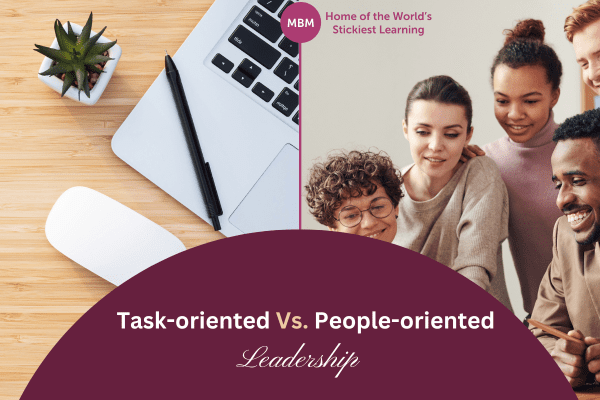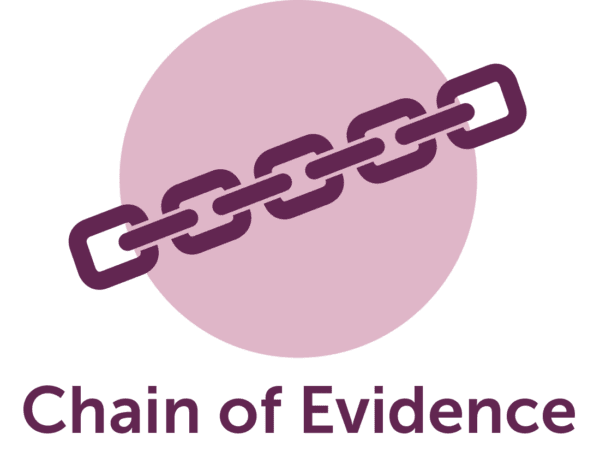Show Your Human Face, and Bring Your People With You
People-oriented leadership (POL) is coming into sharp focus in 2023, as companies work out where to go next in these uncertain times.
According to experts, ‘POL’ is typically more prevalent in start-ups, smaller companies, and professional services rather than larger companies in traditional industry sectors such as manufacturing, which have fixed production processes and established working methods.
Even so, since the pandemic, increasing numbers of British manufacturers, including at least one major grocery supplier, have been reviewing their businesses. This has involved looking at how to make their site-based operations more people-oriented having introduced hybrid working for their office-based staff. The insight is, to keep your leadership people-oriented, and your team will happily follow on the journey.

Here’s an Example of a People-oriented Leader
Canadian training providers the Niagara Institute quote Sir Richard Branson as saying, “Take care of your employees, and they will take care of your business. It’s as simple as that.”
People-oriented leaders prefer to work with their teams and consult them about how things should be done. They’re still running the show, but they’re also focused on building relationships and making employees feel included, valued, and motivated. Because they know it’s good for the business.

How Does People-oriented Leadership Tie in With Known Leadership Styles?
In start-ups and small companies, business leaders are naturally likely to be autocratic, making employees work towards their vision and their goals. But at the same time, the boss is also likely to be people-oriented, respecting and engaging their team, and inspiring them to give their best.
As businesses grow, things inevitably become more formal, but people-oriented leadership can be transformational. Leaders become more democratic in their decision-making, letting employees have a say when appropriate. And from there, laissez-faire leadership means trusting others to run things day to day, while the boss focuses on building the business and working out the strategy.
What Are the Characteristics of People-oriented Leadership?
The characteristics are the same, whatever size of business:
- Good work is recognised and rewarded.
- Employees at all levels are appreciated and treated as valued partners.
- The business invests in individuals’ success and growth.
- Employees are seen as humans with real lives, not anonymous drones.
- Customer service becomes more authentic because people in the business feel respected and take pride in their jobs.
What Are the Traits of People-oriented Leaders?
Here are some typical ones. They:
- Invest time and energy in earning employees’ trust and respect.
- Watch for signs of burnout.
- Provide coaching.
- Encourage employees’ professional development.
- Work on creating and building a positive team culture.
- Value employees’ insights and perspectives, and seek them out when making decisions.
Why is People-oriented Leadership a Good Thing?
People-oriented leadership makes employees happier and brings the business significant benefits. Increased job satisfaction, engagement, and loyalty lead to greater creativity, innovation, productivity, and outperformance.
What Does ‘People-oriented’ Actually Mean?

To be a people-oriented leader, you need to start by being people-oriented yourself. The personal development platform Fingerprint for Success says people orientation means you’d rather not keep your head down and work in isolation. You prefer engaging directly with people in your day-to-day working life. You’re highly interested in who you’re working with, and how well you get along.
According to Fingerprint for Success, people-orientation isn’t just helpful in leadership. It’s also important in people-centred fields like sales, customer service, HR, marketing, media, and stakeholder management. Being consciously people-oriented is good for your mental health, too. It makes you better able to handle stress and unforeseen circumstances, including in your personal life.
Are Any Myers-Briggs Personality Types More People-oriented Than Others?
One is, for sure. The psychology website personalitypage.com says ‘ESFP’ personality types are people-oriented and fun-loving and make work enjoyable for others. Living for the moment, they love new experiences, and they’re interested in serving others.
If you’re not an ‘ESFP’ personality type, you don’t have to change your personality and put on an act. Becoming more people-oriented is something you can consciously work on, like self-awareness and other soft skills.
How Can You Become More People-oriented?
The Art of Simple website says, people-oriented individuals:
- Focus on the needs of the people around them.
- Concern themselves with building relationships and keeping people happy.
- Place more importance on people’s feelings and happiness than their to-do lists.
That’s not saying throw away your to-do list! If you’re the boss, it’s your job to make the team do what you need them to. But being people-oriented means treating them as humans, and telling them why you want things done like that, and how they will benefit. Successful leaders know about pivoting between leadership styles, and people-oriented leadership is at the heart of it.
Let’s Look at Some More Famous People-oriented Leaders
We mentioned Sir Richard Branson earlier as an example of a well-known people-oriented leader. Google and Adobe’s leadership reputedly also give their people leeway to lead development in directions that inspire them. Both companies are incredibly successful, and great names to put on a CV. But not only that, they offer talented people a culture they can flourish in.
Staying with famous businesses and their leaders, in our recent article on participative management, we mentioned Bill Gates and said people cite him both as an authoritative leader and the classic example of participative leadership, welcoming suggestions from colleagues and teams.
That might sound contradictory. The thing is, in his time as Microsoft’s Chairman and CEO, Gates knew exactly what he wanted to happen in the business, but also understood the importance of valuing individual team member’s skills and knowledge. Whichever leadership style you prefer generally, you’ll also benefit from showing people-oriented leadership.
Let’s Look at the Differences Between Task-oriented Leadership and People-oriented Leadership

Task-oriented leaders focus on their objectives and how to accomplish them. People-oriented leaders focus at least as much on the well-being of the people performing those tasks as on the tasks they’re doing. Moreover, task-oriented leaders, teams, and businesses, usually concentrate on the product and the company. By contrast, people-oriented companies concentrate on their culture and mission.
Now Let’s Look at Some Specific Differences Between ‘Task’ and ‘People’ Oriented
In task-oriented leadership,
- No one’s left floundering without guidance. Newbies get up to speed fast and work in established frameworks.
- Projects have clear stages. There are strict deadlines, including for sub-tasks, ensuring work is evenly distributed and there’s the capacity to achieve the goals.
- Having a framework makes it easy to spot people struggling or failing to meet objectives. This gives leaders opportunities for training or coaching, to help them get up to speed.
- Another plus with task-oriented leadership is, you can set rewards for completing set objectives. This can be very motivating for some people, but less so for others. And that brings us to people-oriented leadership.
In people-oriented leadership,
- Some individuals thrive on working to more flexible objectives, where their work’s creativity and uniqueness is more important than meeting set deadlines.
- These people are generally creative and engaged and flourish because they feel they’re contributing to a greater whole.
- People-oriented leaders typically have more flexible teams, with greater retention of good people, and a high degree of communication. We’ll come back to communication later.
You Need to Find the Right Balance Between the Two Types of Leadership – but You Also Have to Make the Business Work!
Writing on the Massachusetts-based eSkill talent assessment platform in 2019, just before the pandemic, Sheila Kloefkorn quoted research figures in which 83% of organisations said it was important to develop leaders at all levels. In 43% of these companies, the top priority was closing gaps across all leader levels.
Kloefkorn went on to say more money was spent on leadership development than any other corporate training, and yet 71% of companies didn’t feel their leaders were able to lead their business into the future. Somewhat worrying, to say the least. What’s being achieved with all that training?!
Here in the UK, 2020 government figures show employers invested around £42 bn in training each year, spending an average £1,530 per employee. To get the best ROI from their training investment companies need to be clear about what mix of leadership styles they want to have, and how it will enhance overall performance.

And let’s be positive. It’s easy to be sceptical about what’s achieved with the money spent on training, but hold onto this thought. During the pandemic and recently, with the disruption of the Ukraine War, businesses on both sides of the Atlantic and around the world have shown extraordinary resilience and tenacity. And it has involved businesses thinking on the hoof, balancing task-oriented and people-oriented leadership, and appreciating how to fit them together and achieve results. That requires knowing the different features.
What Are the Key Features of Task-oriented and People-oriented Leadership?

Task-oriented management focuses on:
- Quick decision-making by the boss.
- Completing the project at hand.
- Effective goal setting and a clear path to completing the objectives.
- Schedules and deadlines.
- Structure, roles, and goals.
- Producing the desired results.
People-oriented leadership emphasises:
- Involving the team, when appropriate, in decision-making.
- Satisfaction, motivation, and well-being of workers.
- Facilitating positive, productive interaction between colleagues.
- Teamwork and clear communication.
- Team-building meetings and exercises.
In recent months, companies have needed to do both simultaneously, to be resilient.
There’s Definitely a Place for Task-oriented Leadership. But Remember to Be People-oriented in Your Communication
If you choose task-oriented leadership, clarify the reasons for doing it, specify the tasks involved, and communicate that everyone must participate and do their part. Openness about what you’re doing keeps things people-oriented, and the team on your side.
If you resort to task-oriented leadership for a long period, say because of difficult circumstances, inevitably it will lead to low morale. There’s no escaping that.
Having no choice but to consistently work to strict deadlines and excessive “orientation to task” impacts the company culture. Keep things as upbeat as you can, through open communication from the top, getting out there on the floor and talking to the people around the business.
This morale-boosting aspect of people-oriented leadership is why some people prefer to call it “relationship leadership.” It highlights the fact that this type of leadership focuses on creating success by building lasting relationships with employees and promoting their motivation, job satisfaction and work-life balance.
It Isn’t Always Easy to Get This Stuff Right…
As a leader, you’ll need to work harder to connect with some people than with others. To create your own leadership approach that enables you to complete tasks and build positive relationships with people in the present, take the best elements from each leadership style and merge them.
5 Ways to Implement People-oriented Leadership in Your Business

We’ve talked extensively about communication being at the heart of all this. Here are some other examples of areas where you can put people-oriented leadership into practice in your business, and reap the benefits:
#1. Do Some Coaching:
Help team members improve their individual skills and abilities. Coach them to be more productive, and build relationships with them.
Check out our ultimate guide on coaching skills.
#2. Develop Leadership:
Recognise individuals’ strengths, and develop their leadership skills by placing them in roles where they can practise them.
Check out our ultimate guide on leadership skills.
#3. Promote Creativity and Initiative:
Help employees feel valued and take responsibility for their actions by giving them the freedom to make sound decisions themselves. Additionally, allowing people autonomy to be creative sparks greater productivity, and also gives them more respect for their colleagues’ abilities.
#4. Recognise and Reward:
Celebrate individuals’ achievements. This reassures other team members that you appreciate their hard work, so they’re likely to feel encouraged to. You should give these rewards for consistent individual excellence rather than rewarding overachieving a specific task, which falls under task-based leadership.
#5. Promote from Within:
Internal promotions are the best way to recognise and reward consistent achievement. Unlike one-off rewards, they increase people’s regular earnings and importantly, help them develop and learn. If employees see there are opportunities for internal promotion, they’re more likely to commit to their current job and strive to shine.
And Finally: Does People-oriented Leadership Suit Your Business?

We’ve talked at length about how task-oriented leadership is necessary in hard times. But when you’re out of the rough, how easy is it to get back on course?
Task-oriented leadership tends to be inherent in larger, traditional businesses. But as we’ve said, since the pandemic plenty of larger, progressive companies, like the British food supplier mentioned at the start, are choosing to put people over processes as they look at where they develop next as a business.
Ask yourself these questions, to help guide your thinking:
- Do we prefer to focus on the task, or the people doing it?
- Is it better for us to focus on strategies or the things we currently do?
- As a business do we value our structure and procedures, or are innovation and creativity more of a priority?
- What’s more important – titles and hierarchies, or rapport and great working culture?
- And last of all, but certainly not least: would this business benefit from clearly defined boundaries when it comes to communication and decision-making? Or is it important that everyone feels part of the team?
The best thing to do is sit down with the team and use questions like these to prompt conversations about where you want to go. Business change is always possible, even in big companies. It sounds daunting. But starting the journey comes down to people-oriented leadership, and talking and listening to each other.
Was this article helpful? Shower us with likes on Facebook!
Action: For even more useful content on people management, check out our ultimate guide on People Management Skills.




